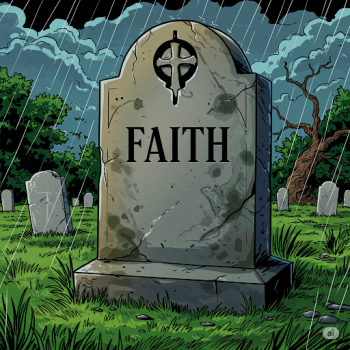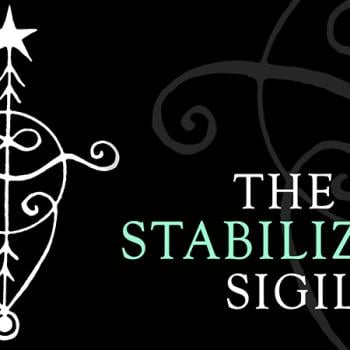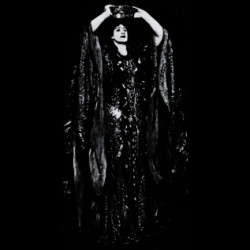Folkloric sources indicate a belief that faeries and witches have a fondness for dancing at night in the woods and meadows. Folktales mention flattened plants that form circles on the ground, which are said to be evidence of such dances. These spots are known as faery-circles or hag-circles. The scientific explanation is that these are caused by the growth of fungi, which can grow in a circular pattern. This reminds me of an old belief that witches can cause the moon to excrete magical foam on the ground (said to be associated with calling down the moon from the night sky). Ancient writers such as Lucan refer to it as virus lunare, and witches were believed to gather it up to aid their enchantments. I was taught that this idea originated from a misunderstanding about the practice in witchcraft of wetting objects with the early morning dew that collects on lichen. Dew is heaviest on the morning following a full moon-enough said.
Returning to the theme of night gatherings, in chapter two we saw early references in the Christian era that mention the tregenda. This, we noted, was originally a gathering of witches involving formal communication with the dead. In Old World witchcraft the dead are intimately connected with the moon. Dancing with the dead at night is one of the features of the Sabbat, or tregenda. This involves making "birch dolls" fashioned with short birch twigs (roughly the length from the tip of the index finger on the left hand down to the wrist). The twigs are bound together with a cord. The cut ends are pushed into a pouch, which is then tied tightly with another cord. This forms a "head" on the doll, with the branches extending downward making the doll's body. These dolls represent the dead. During the dance, they are tossed back and forth through the air between the dancers.52
Ancient writers such as Plutarch wrote about the souls of the dead being drawn to the moon where they abide for a time and are later reborn on the earth. For us the circle of the moon in the night sky symbolizes the cycle of rebirth and the dwelling place of departed souls. Circle dances symbolically unite the living and the dead and keep alive the connection between past and present generations. One ancient belief held that the moon is literally a goddess (as opposed to a cult object associated with her). In this regard it is a comforting thought to think of the womb of this goddess filled with the light of souls residing within her and awaiting rebirth (poetic though it may be).
In Old World witchcraft the trees are intimately connected with spirits of the dead. Old lore presents the idea that departed souls await rebirth in trees. Our lore associated with this idea involves an interesting concept that is said to be quite old. Souls are released from the full moon and come down into the woods where they pass into the trees. Looking at the full moon through the trees, their branches appear as though they touch her light. These limbs can be perceived as pathways or bridges that connect the world of the living to the realm of the dead.53 A teaching once imparted to me described the belief that only certain trees are used as conduits to and from the Otherworld. These trees bear signs such as a hollow on the trunk (known as a faery door) or some special mark that is suggestive of a face. It is not uncommon for these faces to resemble that of a creature from an old faery tale. The teaching adds that in the Otherworld the counterpart trees have a glimmer about them, which points them out as passageways to the mortal world. In a discussion about this (with some fellow witches) the idea arose that these trees happen to stand at an intersection where the fabric of two different dimensions meet or overlap. Seeing them is like noticing a path into the woods or through the hills. Knowing where they are, and remembering how to find them again, takes a witch or a faery, or so the old tales tell us.
Mystical ideas associated with trees make the body of a tree, and anything produced on the tree, useful as a tool of magic. The belief is that anything grown on the tree possesses the essence of the tree's nature (or spirit). This is one the reasons why wands have been valued by witches for ages. They appear in some of the oldest literature about witches. Among the earliest mentions in Western literature are the beech, olive, and birch. Others follow in time and are regarded as being particularly potent. Oak and willow are two examples.
So far in this chapter the depiction of the Old Ways witch presents her or his connection to mystical themes. But the witch is also a magician who works with the forces of the earth, the celestial and chthonic powers. In the next chapter we will fully explore the use of plants in witchcraft, but for now our examination will focus on the essence of magic itself.
In old witch lore, and in witchcraft trial transcripts, we find mentions of the use of roots, image-figures, potions, ointments, and various body parts of specific animals. The latter are most often nocturnal animals or amphibian creatures. As we noted, the night is intimately associated with witchcraft because of its lunar connection. Creatures such as the toad or frog are valued because they represent the power of transformation. This is due to their unique lifecycle from the tadpole phase onward. These creatures are also totems of deities associated with witchcraft since ancient times. Lakes and ponds feature in old tales as entryways into the Otherworld or Underworld. Therefore, it is no surprise to find creatures that can pass back and forth from bodies of water to be linked to magic. In effect they live in both worlds (the seen and the unseen) and are therefore agents of magic.




